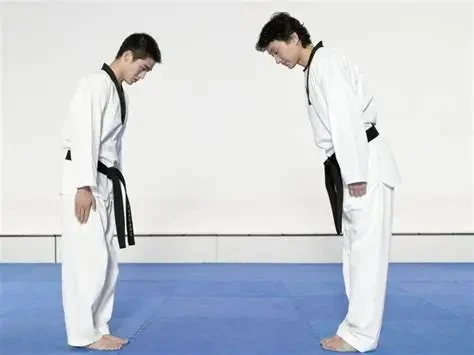
- Understanding-the-Significance-of-Bowing
- Historical-and-Cultural-Origins-of-Bowing-in-Tae-Kwon-Do
- When-and-How-to-Bow-Correctly
- Symbolism-and-Meaning-Behind-the-Bow
- Common-Mistakes-and-How-to-Avoid-Them
- Real-Life-Stories-and-Etiquette-Lessons
- Respect-and-Discipline-in-Modern-Tae-Kwon-Do
- Learn-Tae-Kwon-Do-Etiquette-at-Jeuns-TKD-Hub
1. Understanding the Significance of Bowing
In Tae Kwon Do, bowing is far more than a simple physical gesture—it’s a profound expression of respect, discipline, and humility. This act, known as “Kyung-ye,” reflects the deep-rooted Korean cultural values that form the foundation of martial arts. Whether greeting an instructor, entering the dojang (training hall), or acknowledging an opponent before sparring, bowing signifies mutual respect and shared purpose.
To beginners, the practice may seem purely ceremonial, but as one’s understanding grows, bowing becomes a moment of mindfulness—an opportunity to align body, spirit, and intention. It reminds students that Tae Kwon Do is not merely about physical strength but also about moral and mental growth.
2. Historical and Cultural Origins of Bowing in Tae Kwon Do
2.1 The Korean Roots of Respect
The act of bowing in Tae Kwon Do originates from centuries-old Korean customs influenced by Confucian philosophy. In Korean culture, bowing is an everyday expression of politeness and hierarchy—it’s used to greet elders, express gratitude, or apologize. Tae Kwon Do incorporated this tradition to maintain harmony and order within the training environment.

Wolf MMA / wolf hills jiu jitsu
Falls ChurchFairfax CountyVirginia
7799 Leesburg Pike suite 110, Falls Church, VA 22043, USA
2.2 The Evolution within Martial Arts
When Tae Kwon Do emerged in the mid-20th century, it blended ancient Korean martial practices with Japanese karate and Chinese martial arts influences, all of which emphasized etiquette. As a result, bowing became a shared symbol across dojangs worldwide, representing both the preservation of heritage and the universal language of martial respect.
3. When and How to Bow Correctly
3.1 Entering and Leaving the Dojang
Every Tae Kwon Do student begins and ends their training with a bow at the entrance of the dojang. This signifies gratitude for the space where one learns discipline and strength. It’s a quiet promise to uphold the spirit of martial arts with honor.
3.2 Greeting Instructors and Peers
Students bow to their instructors as a mark of respect for their knowledge and leadership. Bowing to fellow students—before and after sparring—demonstrates mutual recognition and appreciation, ensuring that training remains cooperative rather than competitive.
3.3 Technique and Posture
A proper Tae Kwon Do bow involves standing upright, feet together, hands at the sides, and bending from the waist about 30 degrees. The eyes should look slightly downward as a gesture of humility. Bowing too deeply or too casually can come across as insincere, so balance and mindfulness are key.
4. Symbolism and Meaning Behind the Bow
Bowing in Tae Kwon Do is symbolic of three essential values—respect, humility, and focus. It serves as a reminder that every practitioner, regardless of rank, is part of a greater martial community built on trust and discipline.
When a student bows, they acknowledge not only their teacher and peers but also the centuries of tradition that shaped the art form. It’s an act of letting go of ego, opening the mind to learning, and embracing the discipline necessary to grow both physically and mentally.
5. Common Mistakes and How to Avoid Them
Beginners often make small but significant errors when bowing. Some forget to remove hats, others bow hastily without eye contact or awareness. These mistakes can unintentionally convey disrespect. To bow correctly, slow down and approach each movement with intention.
Another common oversight is treating the bow as a routine gesture rather than a meaningful one. Every bow should carry purpose—it’s not about formality but about mindset. Maintaining this awareness helps strengthen your practice and deepen your respect for Tae Kwon Do traditions.
6. Real-Life Stories and Etiquette Lessons
One inspiring story involves a young practitioner who joined a Tae Kwon Do class in Los Angeles. At first, she viewed bowing as an unnecessary ritual. However, after months of training, she began to notice how it affected her mindset—each bow helped her release stress and enter a focused, respectful state. Over time, it transformed not just her performance in class but her attitude toward everyday life.
Another tale comes from a dojang master in Texas who emphasized the importance of bowing after every sparring match. He explained that even in victory, bowing teaches humility and gratitude—a lesson that stays with students long after they leave the mat.
7. Respect and Discipline in Modern Tae Kwon Do
While Tae Kwon Do has evolved into a global sport with tournaments and Olympic recognition, the cultural etiquette of bowing remains unchanged. It continues to serve as a bridge between modern athleticism and traditional philosophy.
In today’s fast-paced world, where competition often overshadows courtesy, bowing reminds practitioners that true martial strength lies in discipline, respect, and character. It reinforces that mastery in Tae Kwon Do isn’t measured solely by skill—but by how one embodies its values in and outside the dojang.
8. Learn Tae Kwon Do Etiquette at Jeuns TKD Hub
At Jeuns TKD Hub, students learn not only physical techniques but also the cultural etiquette that defines authentic Tae Kwon Do. The instructors emphasize respect, mental focus, and traditional Korean values that shape each bow and movement.
Whether you’re a beginner exploring martial arts or a seasoned practitioner aiming to deepen your understanding, Jeuns TKD Hub provides a well-rounded training experience that connects physical mastery with cultural depth. Experience the discipline, respect, and mindfulness that make Tae Kwon Do more than a sport—it’s a lifelong journey of personal growth.
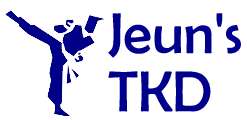


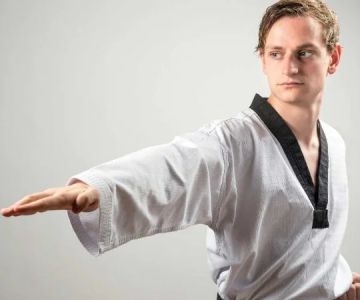
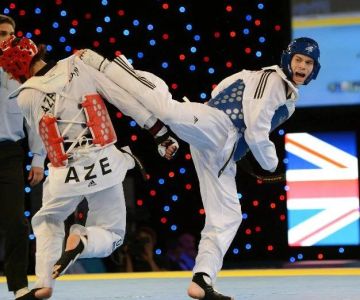
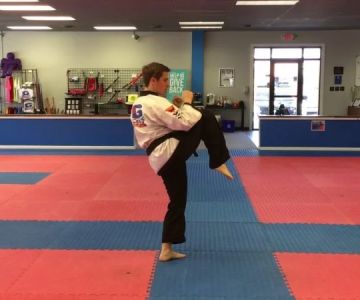
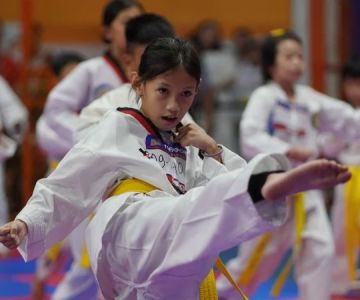
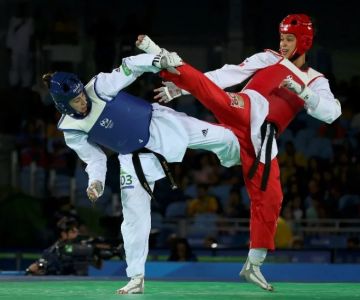
 SUPERMASTER KIM TAEKWONDO JUDO ACADEMY5.0 (162 reviews)
SUPERMASTER KIM TAEKWONDO JUDO ACADEMY5.0 (162 reviews)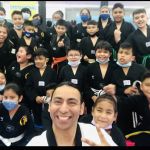 Olympic panthers tkd4.0 (4 reviews)
Olympic panthers tkd4.0 (4 reviews) Ferreira Family Fight Academy: Jiu Jitsu, Kickboxing, MMA, Martial Arts, Kids Classes5.0 (5 reviews)
Ferreira Family Fight Academy: Jiu Jitsu, Kickboxing, MMA, Martial Arts, Kids Classes5.0 (5 reviews) American Kenpo Karate & Shootfighting5.0 (5 reviews)
American Kenpo Karate & Shootfighting5.0 (5 reviews) Grant's Chesapeake Taekwondo & After School Center4.0 (30 reviews)
Grant's Chesapeake Taekwondo & After School Center4.0 (30 reviews) Kung Jung Mu Sul (KJMS) - Rogers Ranch5.0 (55 reviews)
Kung Jung Mu Sul (KJMS) - Rogers Ranch5.0 (55 reviews)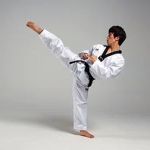 How to Execute a Jumping Roundhouse Kick to the Head
How to Execute a Jumping Roundhouse Kick to the Head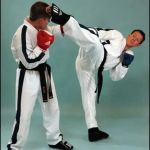 How to Execute a Double Kick Combination in Sparring
How to Execute a Double Kick Combination in Sparring How to Perform a Flawless Axe Kick: A Step-by-Step Guide
How to Perform a Flawless Axe Kick: A Step-by-Step Guide DIY Tae Kwon Do Training Equipment for Home Practice
DIY Tae Kwon Do Training Equipment for Home Practice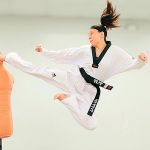 How to Increase Your Vertical Jump for Tae Kwon Do Flying Kicks
How to Increase Your Vertical Jump for Tae Kwon Do Flying Kicks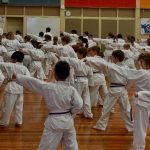 The History of the Tae Kwon Do Peace Corps
The History of the Tae Kwon Do Peace Corps